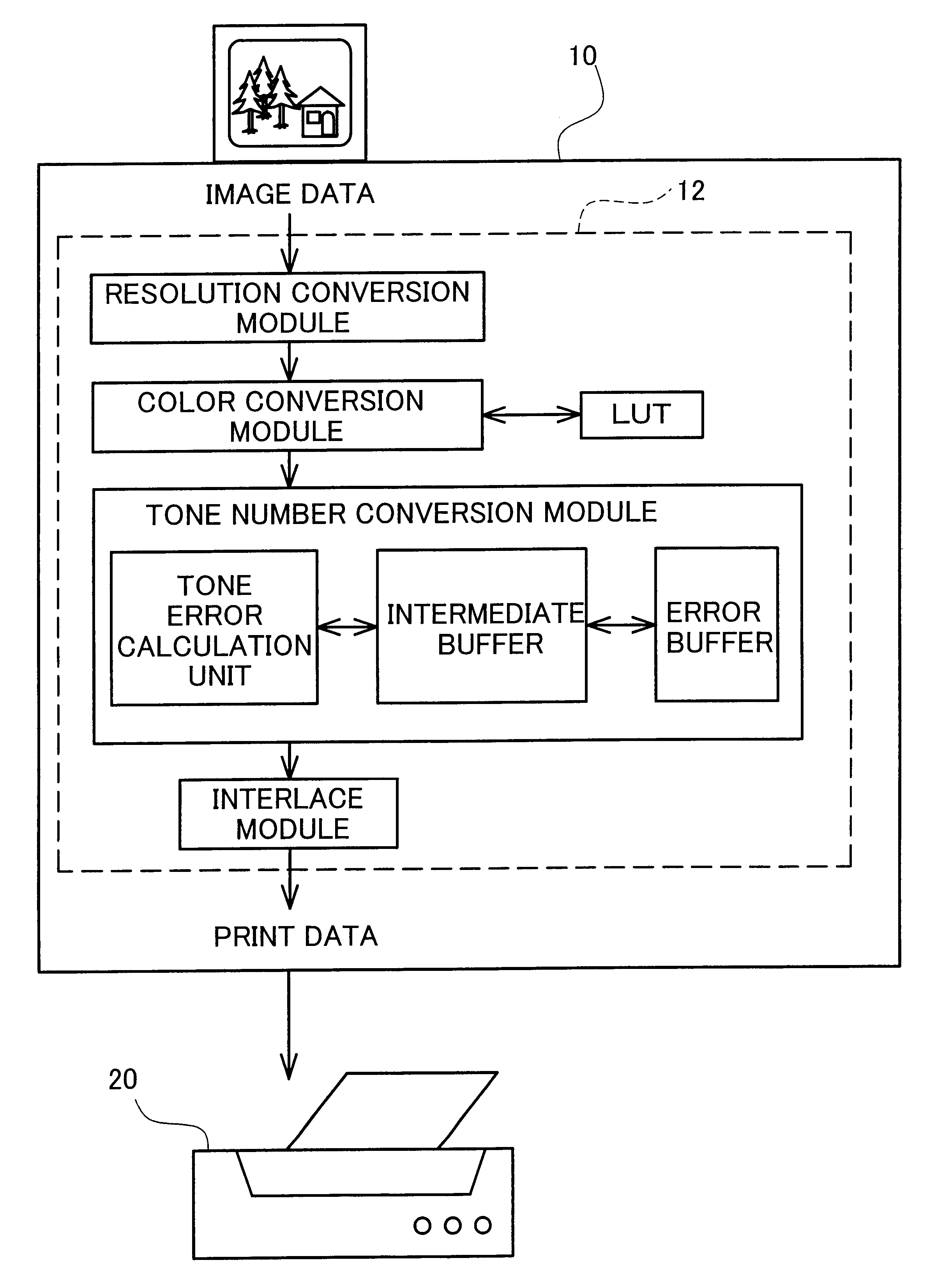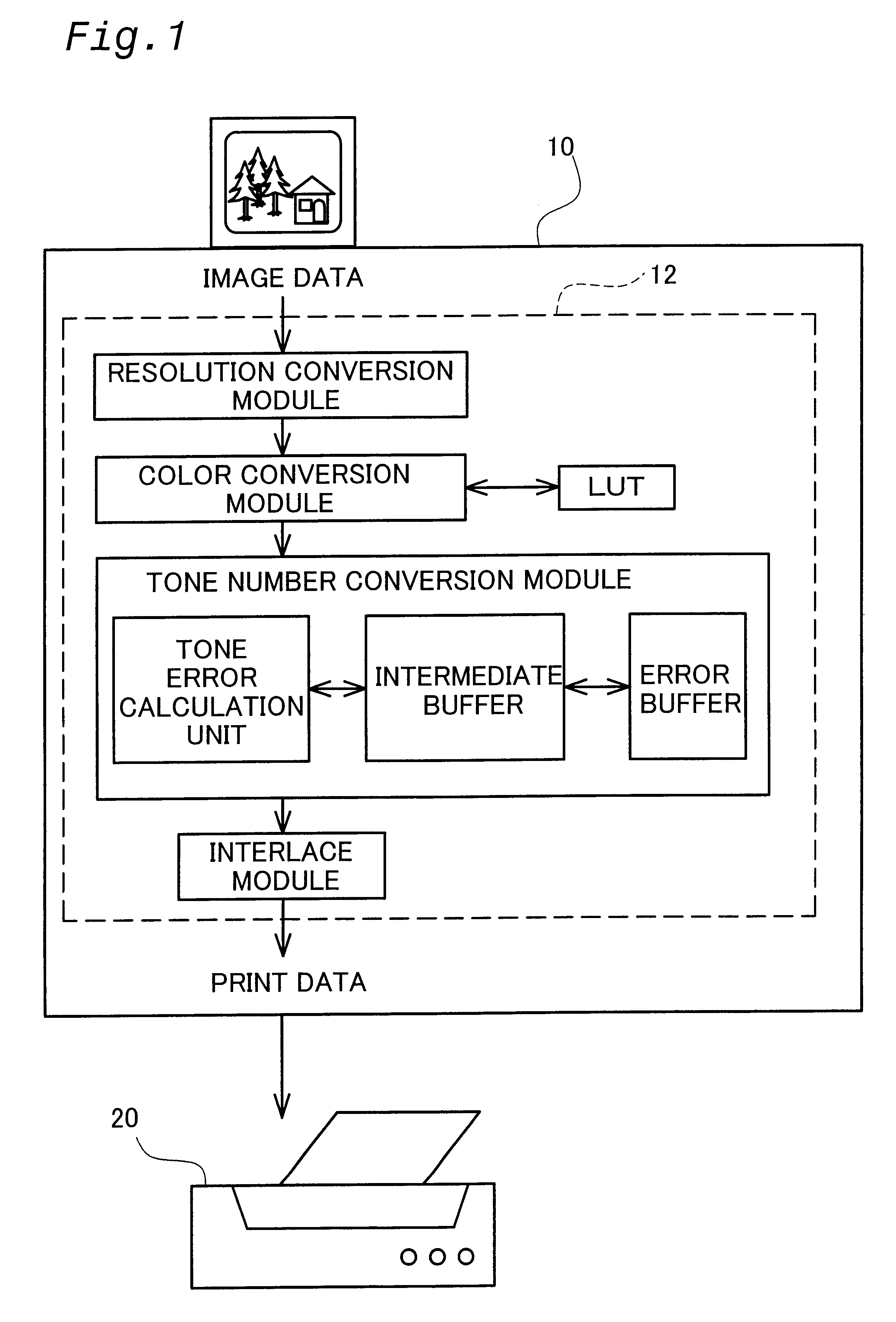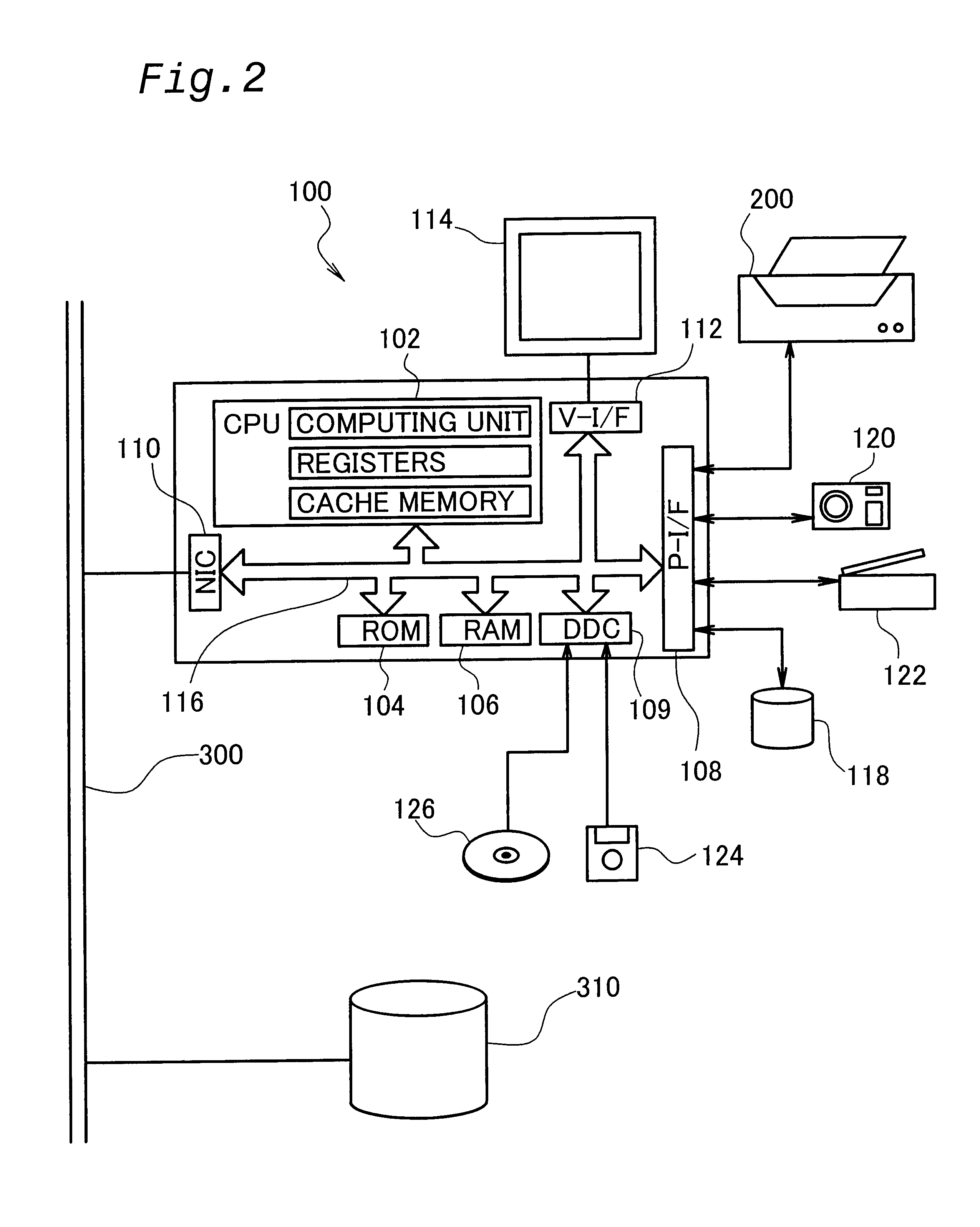Image processing apparatus, method of image processing, print control apparatus, and recording media
a technology of image processing and print control, applied in the field of image data conversion, can solve the problems of wasting processing time, storing tone expression errors, and distributing tone expression errors, and achieve the effects of high-speed display of high-quality images, shortening processing time, and improving picture quality
- Summary
- Abstract
- Description
- Claims
- Application Information
AI Technical Summary
Benefits of technology
Problems solved by technology
Method used
Image
Examples
first embodiment
B. First Embodiment
B-1. Construction of System
FIG. 2 schematically illustrates the construction of a computer 100 as an image processing apparatus in a first embodiment. The computer 100 has a known structure including a CPU 102, a ROM 104, and a RAM 106 that are mutually connected via a bus 116. The CPU 102 has a computing unit that actually executes processing and a plurality of registers that temporarily keep data being processed. The data kept in the registers can be processed at a significantly higher speed than data stored in the RAM 106. A special storage element called a cache memory may be applied, in place of the registers. The cache memory allows higher-speed reading and writing operations of data than the RAM 106, although not so high as the register. The cache memory can treat a greater quantity of data than the register.
The computer 100 is connected to a disk controller DDC 109 for reading data from a floppy disk 124 and a compact disc 126, a peripheral equipment inter...
second embodiment
C. Second Embodiment
C-1. Principles of Shortening Time Required for Tone Number Conversion Process in Second Embodiment
The tone number conversion process of the first embodiment discussed above diffuses the tone error, which arises due to determination of the dot on-off state, into the intermediate buffer like registers that allow high-speed reading and writing operations. The process writes all the error divisions, which are diffused in the intermediate buffer, into the error buffer every time determination of the dot on-off state is concluded for a preset number of pixels. Another tone number conversion process executed in a second embodiment discussed below, on the other hand, writes the error divisions with regard to one pixel into the error buffer every time determination of the dot on-off state is concluded for one pixel. As discussed below, the method of the second embodiment requires a less number of registers to implement the tone number conversion process, compared with th...
third embodiment
D. Third Embodiment
The embodiments discussed above use an identical error diffusion matrix for error diffusion. In the actual tone number conversion, however, in order to attain the desired picture quality, the procedure may selectively use an error diffusion matrix having a narrower diffusion range as in the case of FIG. 6(a) and another error diffusion matrix having a wider diffusion range as in the case of FIG. 6(c).
The error diffusion method may change over the selection among multiple error diffusion matrixes at random, in order to prevent formation of dots in a specific periodical pattern. The technique disclosed in JAPANESE PATENT LAID-OPEN GAZETTE No. 7-226841 uses an error diffusion matrix having a wide diffusion range for error diffusion to improve the dispersibility of dots in a lower dot density area, when the tone value of image data is smaller than a sufficiently small preset threshold value and results in determining creation of a dot. The reason why such application ...
PUM
 Login to view more
Login to view more Abstract
Description
Claims
Application Information
 Login to view more
Login to view more - R&D Engineer
- R&D Manager
- IP Professional
- Industry Leading Data Capabilities
- Powerful AI technology
- Patent DNA Extraction
Browse by: Latest US Patents, China's latest patents, Technical Efficacy Thesaurus, Application Domain, Technology Topic.
© 2024 PatSnap. All rights reserved.Legal|Privacy policy|Modern Slavery Act Transparency Statement|Sitemap



